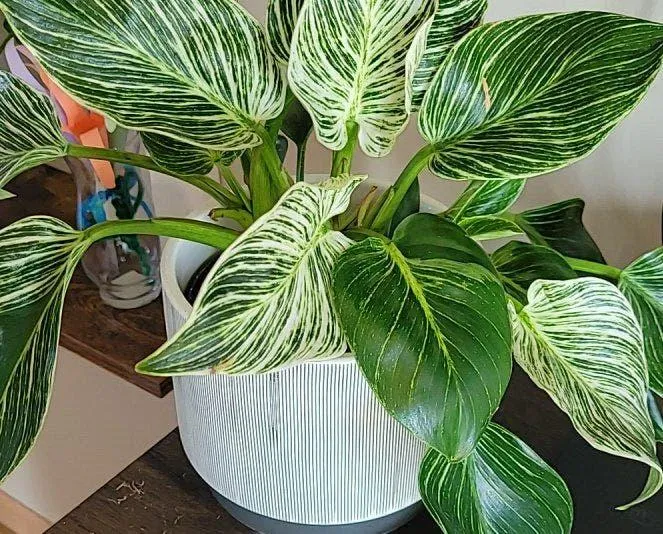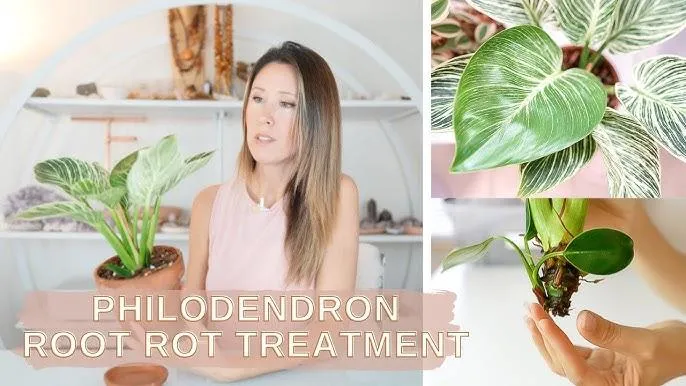Philodendron Root Rot: Identifying and Treating This Common Houseplant Problem
Philodendron root rot is one of the most common issues faced by philodendron owners. As a philodendron lover myself, I’ve had my fair share of plant pals succumb to this nasty condition. From my experience, bacterial and fungal root rots can quickly take down an otherwise healthy philodendron if left unchecked. In this article, I’ll cover the signs of philodendron root rot, what causes it, and most importantly, how to treat and prevent it.
Identifying Philodendron Root Rot
The signs of root rot are usually the first indication that something is wrong with your philodendron’s root system. Some tell-tale signs to watch out for include:
- Wilting or drooping leaves. The plant has difficulty absorbing water without healthy roots.
- Yellowing or browning of lower leaves. The rot is advancing up the stem.
- Soil staying wet for too long. Overwatering is a common cause of root rot.
- Brown, mushy roots when inspected. Rotten roots may have an unpleasant smell.
If your philodendron is displaying any of these symptoms, it’s time to check the roots. Gently remove the plant from its pot and inspect the rootball. Dark brown or black, mushy roots indicate rot has set in. However, catching root rot early improves the odds for treatment and saving the plant.
What Causes Philodendron Root Rot?
The two main culprits behind philodendron root rot are bacteria and fungi. These soil-borne pathogens take hold when the growing conditions are not ideal for root health. Some potential causes of root rot include:

- Overwatering. Soggy soil for prolonged periods allows bacteria and fungi to thrive.
- Poor drainage. Water cannot drain away quickly enough from the rootball.
- Compacted soil. Roots need air pockets to breathe.
- Low light. Weak growth leaves roots vulnerable to infection.
- Temperature fluctuations. Roots distressed by dramatic changes.
- Injury. Cracks or breaks in roots provide entry points.
From my experience, overwatering tops the list as the primary reason for root rot in philodendrons and other houseplants. It’s easy to get carried away with the watering can. But too much of a good thing can wreck your plant’s roots!
Treating Philodendron Root Rot
If you catch root rot early, there’s a good chance of saving an infected philodendron. Here are the steps I recommend:
- Remove from soil. Gently scrape away potting mix to inspect roots.
- Prune rotten roots. Sterilize pruning shears between cuts to curb spread.
- Repot in fresh, well-draining soil. I prefer mixing in perlite or bark.
- Water only when top inch of soil is dry. Don’t overcompensate after root work!
- Improve conditions. Boost light, airflow, moderate temps if needed.
- Monitor closely. Watch for more wilting or new rot developing.
It takes patience, but I’ve saved quite a few philo pals this way. Cutting away all rotten tissue is key, so new roots have room to regrow cleanly. Transplant shock is normal at first, so go easy on water until new growth arrives.
Preventing Philodendron Root Rot
An ounce of prevention is worth a pound of cure, as they say. To keep root rot at bay, focus on optimizing growing conditions for your philodendron’s root health:

- Water only when topsoil is dry. Stick your finger in to check moisture levels.
- Use a well-draining potting mix like potting soil mixed with perlite or bark.
- Avoid soggy soils. Good drainage holes allow water to escape.
- Water thoroughly then allow to dry out between waterings.
- Inspect roots periodically and repot upsizes as needed.
- Adjust watering in winter when growth slows.
- Improve air circulation around roots.
With some TLC, your philodendron’s root system will stay healthy and strong. But we all forget sometimes, right? Now you know what to look for and how to nip root rot issues in the bud. Happy propagating!
I hope this guide has helped address any concerns about philodendron root rot. Please let me know if you have any other questions! Proper root care is so important for keeping our beloved houseplants thriving. With a little patience and practice, you’ll get the hang of spotting and stopping rot before it becomes a bigger problem.
Factors Contributing to Philodendron Root Rot
| Factor | Details |
|---|---|
| Overwatering | Excess moisture in the soil favors the growth of harmful fungi and bacteria that cause root rot. Allow the soil to dry out slightly between waterings. |
| Poor Drainage | Standing water in the soil pot prevents air from reaching the roots, leading to root rot. Use a well-draining potting mix and ensure the container has drainage holes. |
| Low Light | Philodendrons thrive in bright, indirect light. Low light leads to weakened roots that are more prone to disease. |
| Cold Temperatures | Philodendrons are tropical plants and cannot tolerate temperatures below 60°F, which can damage roots. |
| Rootbound Roots | Overcrowded root systems have less room to breath and are more susceptible to root rot. Repot plants annually or when roots emerge from the drainage holes. |
FAQ
-
What causes root rot in philodendron plants?
Root rot is usually caused by overwatering. When the soil stays wet for too long, it creates an environment where harmful fungi and bacteria can grow and damage the roots. Improper drainage that doesn’t let excess water drain out of the soil can also lead to root rot issues.
-
What are the signs of root rot in philodendrons?
The main signs are drooping or yellowing leaves despite regular watering. The roots may feel mushy instead of firm. Sometimes you can even see fuzz growing on rotten roots. The plant simply isn’t able to take up enough water and nutrients through roots that have basically been destroyed by the rot.

-
How can I prevent root rot in my philodendron?
To avoid root rot, don’t overwater and make sure the soil dries out at least a little between waterings. Use a well-draining potting mix so excess water flows through easily. Improving airflow around the plant also helps. You could even try drilling drainage holes in the bottom of plastic pots – just be careful not to crack ’em! Proper care is the best way to keep those roots happy and healthy.
-
What should I do if my philodendron has root rot?
Unfortunately once root rot sets in, it’s kind of too late to save the roots. If the rot hasn’t gotten bad yet, try cutting off any mushy roots and repotting in fresh dry soil. You may be able to nurse it back to health. But if many roots are affected, it’s best to cut off any rotted portions, treat the cuts and replant in fresh soil with better drainage. Make sure to dispose of infected root pieces to avoid spreading the rot. With some TLC it should start growing new roots. Fingers crossed it pulls through!
-
Can root rot be prevented with tap water versus distilled water?
There’s an idea that distilled water prevents root rot better because it lacks minerals, but research doesn’t totally support that. While minerals add nutrition, either tap or distilled water can cause problems in excess. The key things are watering properly so soil dries between, having good drainage, and not over-fertilizing, which may increase mineral levels too much. In moderation, tap water should be fine as long as your plant gets the care it needs. The water source alone isn’t a magic bullet – other factors matter more.
-
Is root rot common in philodendron plants grown indoors?
Root rot does seem to affect philodendrons quite often for indoor plants. It’s easy to overwater when the soil can’t dry out quickly in containers. On the other hand, indoor conditions may provide better humidity levels that philodendrons enjoy. Nevertheless, following guidelines like checking the soil moisture before watering, using well-draining potting mixes and providing adequate airflow can certainly help minimize root rot risks for philodendrons and other houseplants. With a little care, your philodendron should avoid this common problem.

In summary, while root rot can be awful for philodendron plants, it’s largely preventable through proper watering habits and drainage. With a little know-how, your beloved philodendron friends can hopefully stay root-rot free for years to come. Does this help explain the basics? Let me know if you have any other planty questions!
